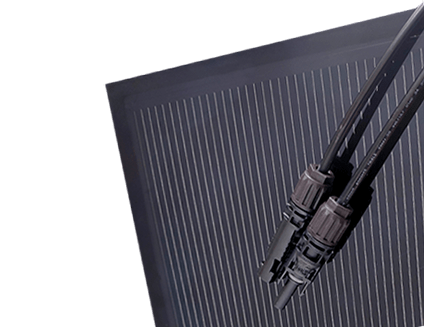
HI-BITS
Standard CIGS solar cells utilize molybdenum as a back-contact electrode and reach 23% efficiency. However, in order to surpass this PCE level and approach Schockley-Queisser limit, a paradigm change is postulated using an alternative solar cell structure.
The goal of Hi-BITS Project is to develop a novel CIGS solar cell architecture with transparent back-contact electrode that could replace molybdenum in the future.
Optical transparency in visual and near-infrared part of the solar spectrum will allow absorption from both sides of the device, further boosting the maximal, achievable efficiency. This will open new application possibilities for CIGS technology. Back contact passivation can also reduce thickness of the absorption layer, decreasing production cycle time and material utilization.
Novel solar cell structure is going to be tested in four different solar module prototypes: bifacial modules, modules with integrated back-reflector, semi-transparent modules and tandem modules. Prototypes are going to be tested in outdoor conditions at four different sites across Europe.


Main tasks of Roltec in the project:
- Laser structuring of prototype modules and solar cells,
- Encapsulation of prototype modules,
- Semi-transparent solar cells (Roltec is a task leader),
- Compliance of prototypes with norms and directives (Roltec is a task leader).
The main task of Roltec in Hi-BITS project is laser structuring, encapsulation and integration of prototype modules and solar cells. Additionally, Roltec is responsible for preparing a report on compliance of prototype modules with EU norms and directives in the context of several targeted applications, e.g. BIPV, agrophotovoltaics.
More information on hi-bits.eu.
Hi-BITS Project in numbers:
Project partners:
- International Iberian Nanotechnology Laboratory (INL)
- French National Centre for Scientific Research (CNRS)
- Center for Solar Energy and Hydrogen Research Baden‑Württemberg (ZSW)
- Uppsala university (UU)
- Swiss Federal Laboratories for Materials Science and Technology (EMPA)
- University of Luxemburg (uni.lu)
- Catalonia Institute for Energy Research (IREC)
- Martin Luther University Halle-Wittenberg (MLU)
- Midsummer AB (MIDS)
- Sunplugged – Solare Energiesysteme GmbH (SUN)
- GreenDelta GmbH (GDL)
- Saint Gobain Recherche (SG)
- Avancis GmbH (AVA)


Funded by the European Union. Program: HORIZON, Grant ID: 101122203.
Funded by the European Union. Views and opinions expressed are however those of the author(s) only and do not necessarily reflect those of the European Union. Neither the European Union nor the granting authority can be held responsible for them.


